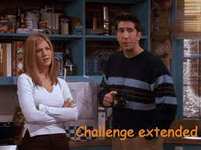I think the point is that Form's testing is real life. Cool, a company can perform a test in a controlled environment, but how does that shaking, rattling, and rolling relate to a fall or a dropped weapon? Call it "bubba" all you want, it's real life. Sheep hunts and backcountry mule deer hunts don't happen in a "facility in a controlled, standardized, and repeatable environment." They happen in the hills, at weird angles and in less than desirable conditions. I don't care what happens in a vacuum or in some company's factory, I care what happens when it's strapped atop my rifle and tips over or tumbles. That's what these optics companies aren't understanding, we don't care that their optics are "tested to 50,000 G's of force," that means nothing to your average mouth breather. What I wanna know is will the freakin' thing hold zero when it gets bumped or rides in a case across the country or slips from my hand on a stalk. Period. That's what matters. They're designing them to survive their specific tests, not actual use. I'll never own a 50 BMG, so I don't care if my scope won't survive the recoil from one. What I DO care about is that they hold zero under use and occasional accidental abuse.
What would be real interesting would be to take a Vortex optic and give it to Leupold to run through their testing protocol, and vice-versa. I bet both companies break their competitors' scopes. Why? Because Leupold build's them to meet Leupold's standards and "tests," and Vortex does the same with their own. You can replace Leupold and Vortex with any of the major optics manufacturers in the world, the outcome would probably be identical. The problem is there's no global standard, nobody is designing their scopes to survive anything but their own small subset of "tests," and those "tests" don't equate to anything in real life.
But hey, I'm just some random guy on the internet...
 www.rokslide.com
www.rokslide.com




